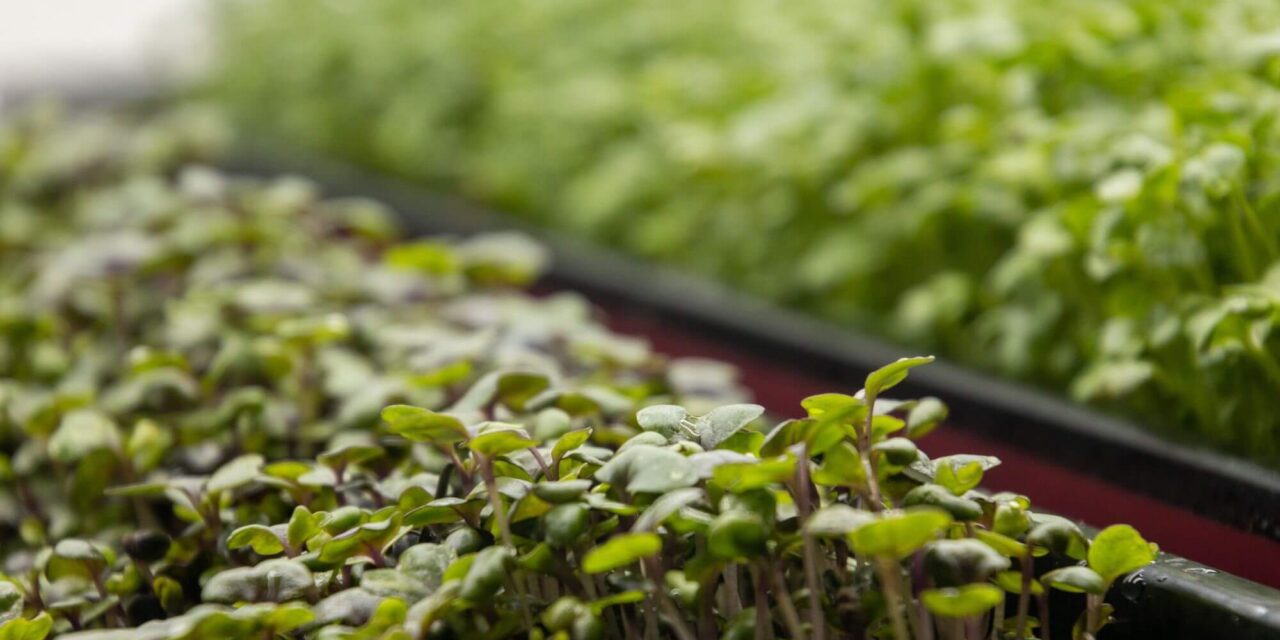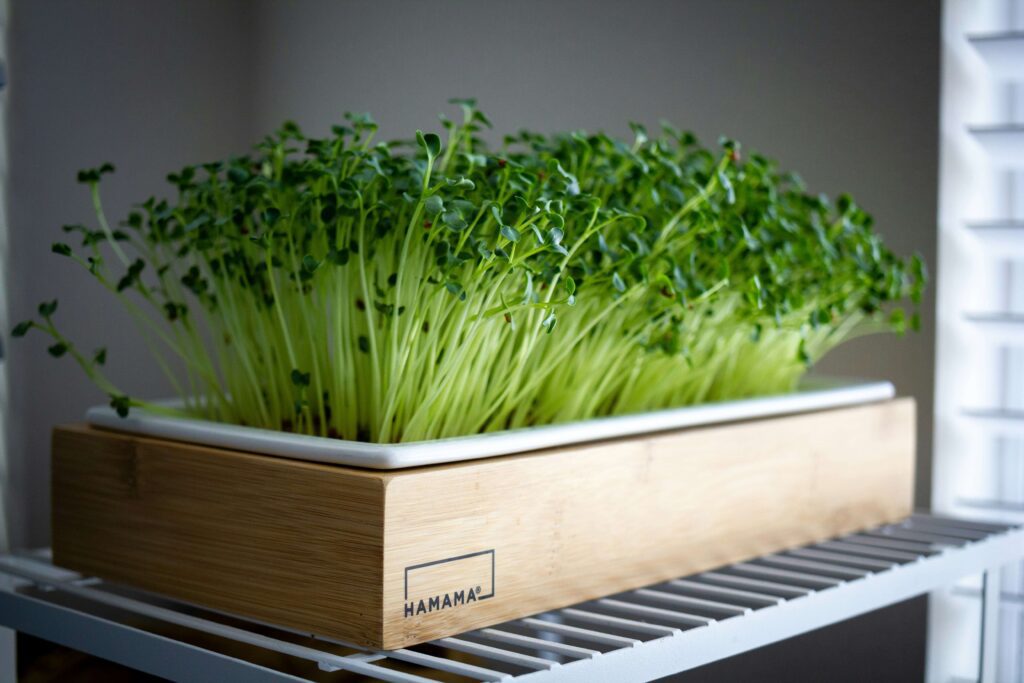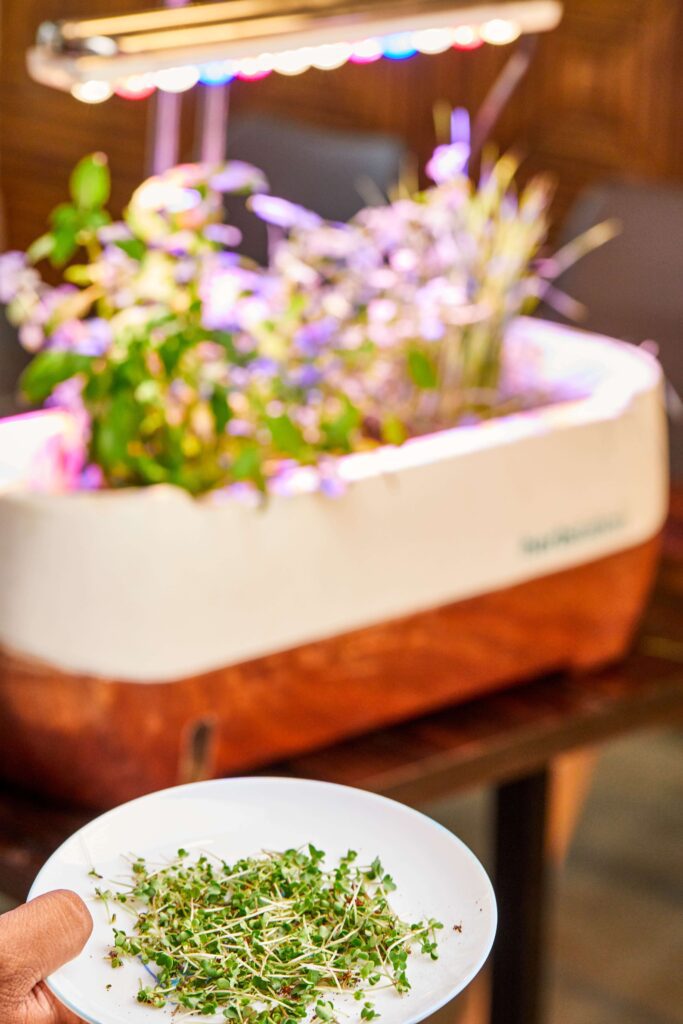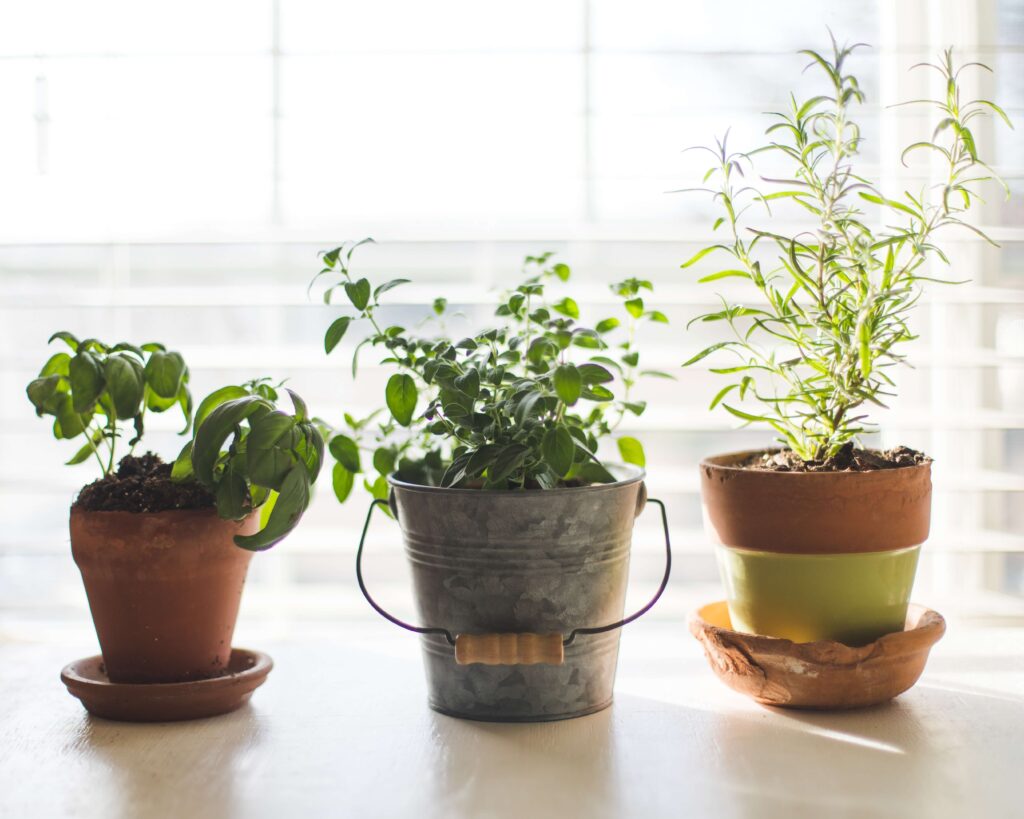
The Eco-Friendly Kitchen: Indoor Herb and Microgreen Growing

The path toward sustainable, environmentally friendly living frequently takes us to the kitchen, the center of the house. What if you could transform this kitchen into a colorful haven of fresh greens that you could access at all times? Introducing the revolution in eco-friendly kitchens: growing your own microgreens and indoor herbs not only improves your cooking but also gives your home a stylish, eco-friendly touch.
Contents
Microgreens: The Miniature Nutrition Powerhouses
Let’s begin with the main attraction in our green kitchen, which are microgreens. These small yet mighty powerhouses are loaded with nutrition and taste. When their first real leaves appear, microgreens—basically the immature seedlings of food plants and herbs—are plucked. They are concentrated sources of vitamins, minerals, and antioxidants despite their small size. Consider incorporating pea shoots’ delicate sweetness or the sharp taste of arugula into your salads, sandwiches, or even as a garnish for your main courses. Microgreens are a nutritious treasure trove in addition to being a culinary delight.

From Soil to Plate: Cutting Down on Your Food Mileage
Thus, when you can simply purchase microgreens from the shop, why put in the work of cultivating your own? The journey from seed to plate and the sustainability it offers your table hold the key to the solution. The amount of food that goes from the farm to your plate is called “food miles,” and it can be significantly decreased by growing microgreens at home. This reduces your carbon footprint and guarantees that you always have access to fresh greens without the negative environmental effects of packaging and shipping.
Setting Up Your Indoor Green Haven: A Step-by-Step Microgreens and Indoor Herb Guide
Now that you’re convinced of the benefits of cultivating your own microgreens, let’s get down to business. You might be surprised at how simple it is to set up your own indoor herb sanctuary. Here’s a how-to manual to get you going:
- Select your seeds carefully: Look for organic, non-GMO seeds that are marked especially for growing microgreens. Broccoli, radish, arugula, and sunflower are popular options.
- Choose the Correct Containers: To prevent waterlogging, choose shallow trays or containers with drainage holes. You can recycle old containers or buy trays made specifically for growing microgreens.
- Assemble the Growing Medium: For microgreens, a soilless mix or a combination of coconut coir and perlite works well. The growing media should be added to your selected containers, leaving about an inch at the top.
- Plant the Seeds: Distribute the seeds uniformly over the soil’s surface, gently pressing them into the growing medium. Remember that the purpose of densely sowing microgreens is to increase yield.
- Watering and Lighting: To simulate a miniature greenhouse, mist the seeds with water and place a clear lid or plastic wrap over the pots. Put them somewhere brightly lit, ideally close to a window that lets in some natural light.
- Harvesting: Your microgreens will be ready to be harvested in one to two weeks. Using clean scissors, cut them off just above the soil line. Enjoy the freshness after rinsing!
Herbs at Your Fingertips: Increasing Sustainability and Flavor
Your journey into the green kitchen doesn’t end with microgreens. Now let’s talk about herbs, those fragrant allies that may elevate a simple meal to a gourmet masterpiece. Not only does growing herbs inside provide a steady supply of fresh flavors, but it also lets you try out unusual types that aren’t usually accessible in supermarkets.
Revealing the Universe of Indoor Herb and Microgreens Growing
- Basil Bliss: Basil is a must-have herb, whether it’s Thai basil for a hint of licorice in your meals or sweet basil for your pasta. If you position your basil plant close to a window that receives plenty of sunlight, you’ll always have fragrant leaves.
- Mint Magic: A versatile herb, mint may be used for anything from cooling tea to garnishing pastries. To avoid its invasive nature, keep it contained in a pot so you always have fresh mint on hand for your cooking endeavors.
- Rosemary Revival: The earthy flavor of rosemary elevates grilled meats and roasted veggies. This resilient herb needs lots of sunlight and grows best in well-drained soil.
- Champions of the Chives: Add a hint of onion flavor to omelets, salads, and other dishes. They are simple to cultivate, and they can even flourish on your kitchen windowsill in smaller containers.
- Thyme Traveler: Thyme, with its aromatic character and delicate leaves, is a cooking staple. It is the perfect herb to grow inside because it needs soil that drains properly and moderate amounts of sunlight.

The Sustainable Edge: Using Indoor Gardening to Reduce Food Waste
Indoor gardening not only makes a kitchen look great, but it also helps cut down on food waste. Having access to a fresh supply of microgreens and herbs reduces the likelihood of overspending at the grocery store and allows you to harvest only what you need for your meals. This tiny change in your cooking practices can have a significant effect on lowering the quantity of food waste produced in your home as a whole.

Eco-Friendly Kitchen, Happy Home: The Joy of Cultivating Your Own Greens
Remember that the joy of the process is just as important as the final product when you set out to create a green kitchen. Keeping your own herbs and microgreens indoors gives your cuisine a connection that extends beyond the plate. It’s about tasting the freshness that comes with knowing the life cycle of your ingredients and appreciating the work that goes into growing them.
Thus, put on your work gloves and start transforming your kitchen into a lush, sustainable paradise. Your green kitchen awaits, a tribute to the harmonic fusion of culinary innovation and ecological living, from the vivid hues of microgreens to the scented embrace of herbs.

























